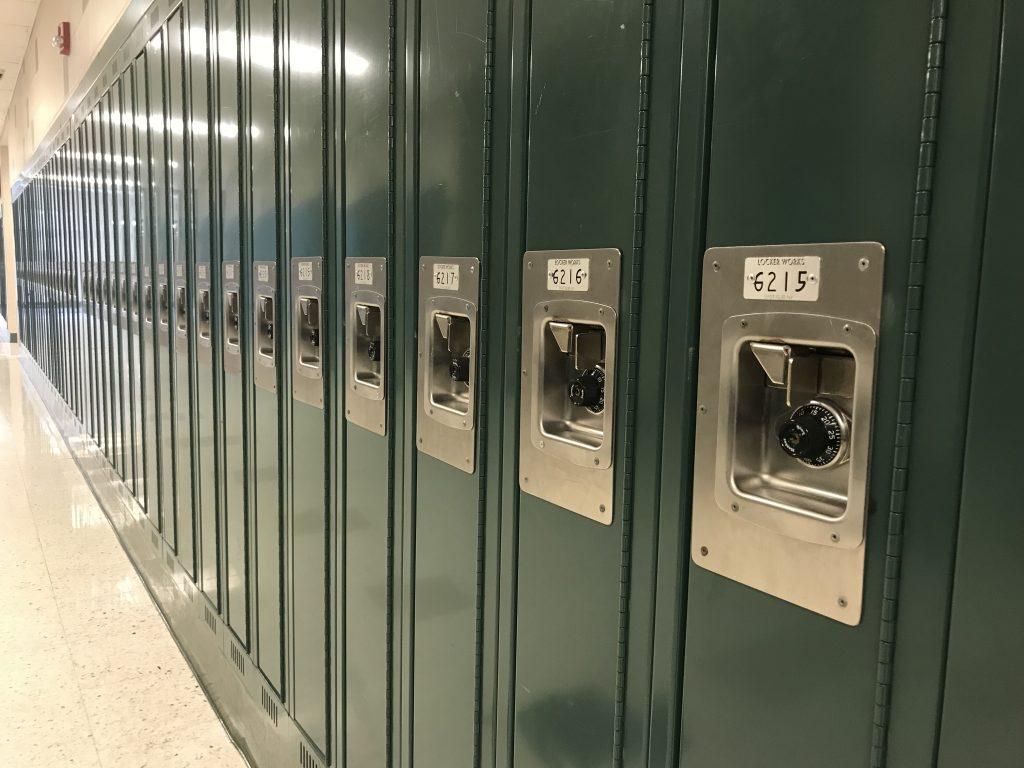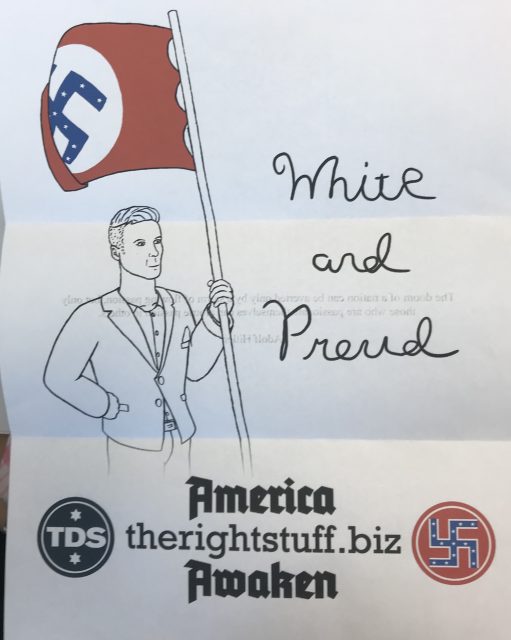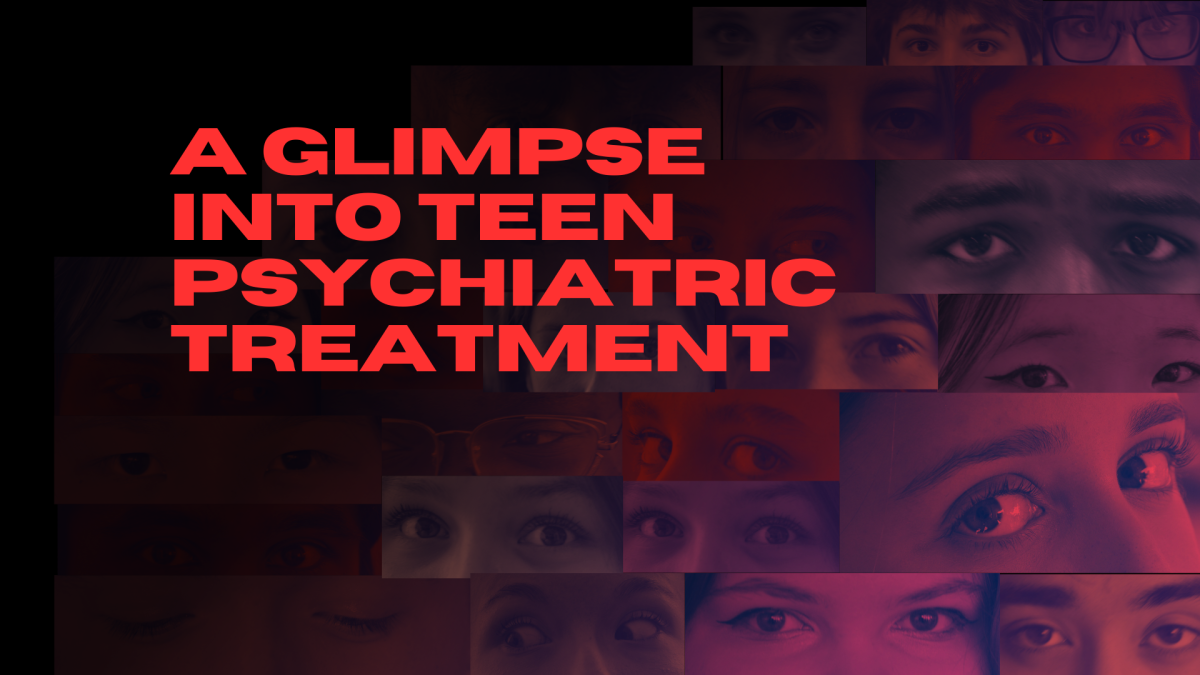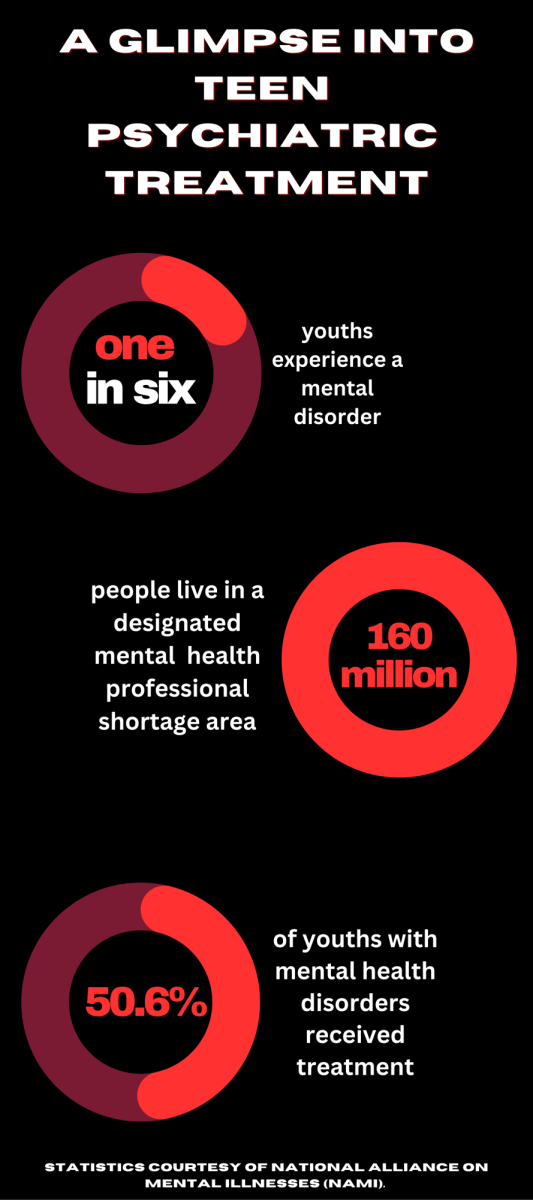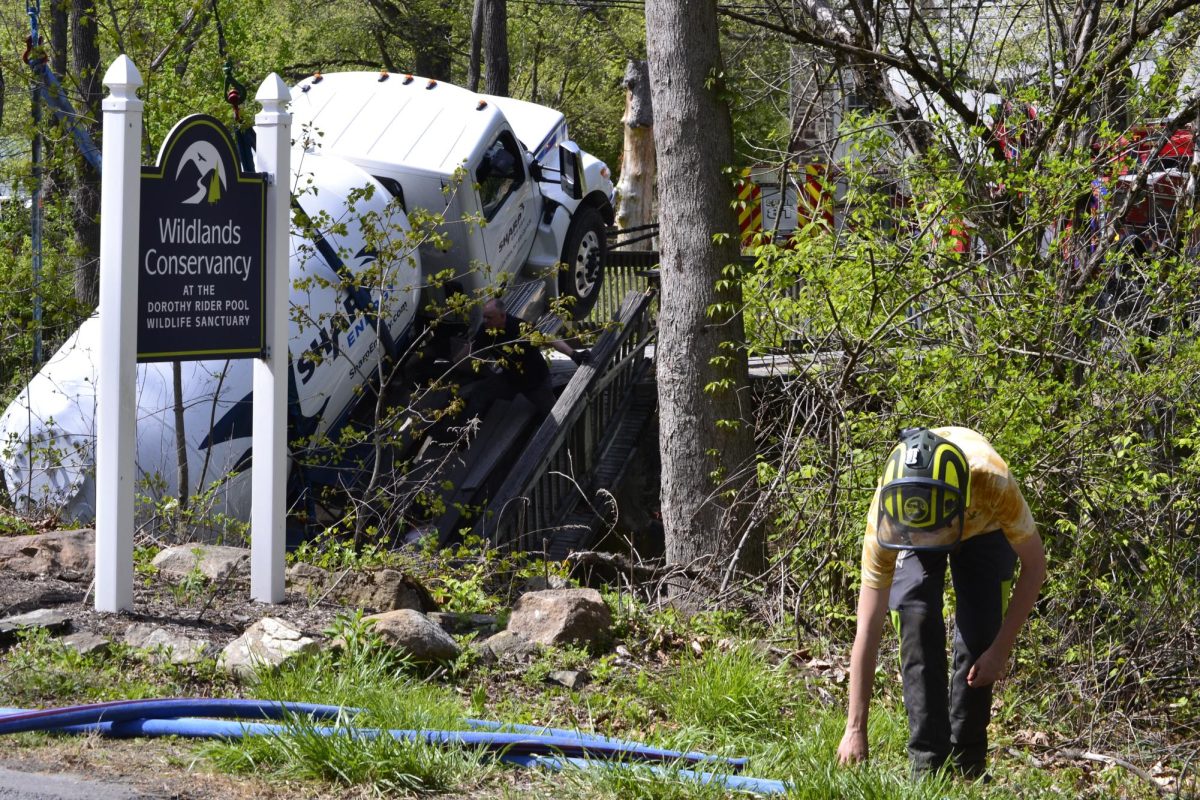Story by
Isabella Wegner
Makenzie Christman
Michael Moyzan
Renee Martin
Nestled in a diverse community, Emmaus High School stands surrounded by pockets of intolerance and hatred. With Pennsylvania placing in the top five states in the nation that are home to hate groups, Lehigh Valley area residents often witness discrimination.
Incidents of discrimination have been recorded locally in Saucon Valley, Kutztown, East Greenville — and even closer to EHS.
While some students at Emmaus would like to believe that the East Penn School District is largely free from racism and hate, incidents occur closer to home than perhaps some realize.
In early February, residents in the borough of Emmaus discovered someone placed stickers on stop signs that read: “IT’S OKAY TO BE WHITE.” Officials viewed the stickers as racist. Emmaus Borough Manager Shane Pepe has not responded to requests for comment; however, he told The Morning Call last month that the phrase is “associated with white supremacy.”
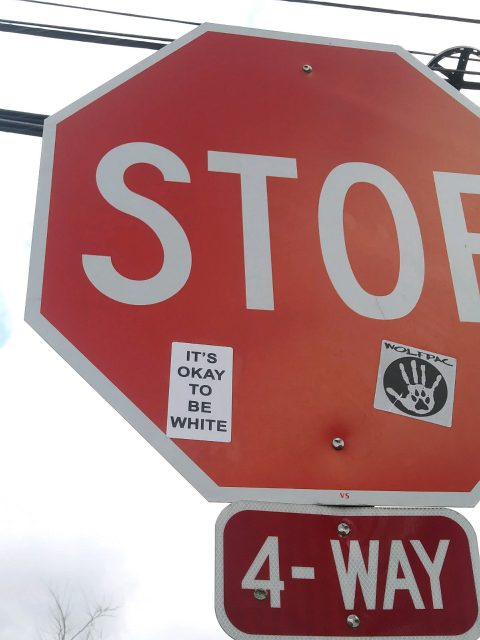 Photo courtesy of Sarah O’Sullivan
Photo courtesy of Sarah O’Sullivan
According to the Southern Poverty Law Center, 36 out of the 954 hate groups that exist within the United States operate inside Pennsylvania. Some are branches of national or state movements; others are the headquarters of hate groups, so says the SPLC, which monitors and reports on hate and extremist groups.
The battleground over free speech has raged on as to whether or not hate speech should be tolerated or protected under the First Amendment.
The concept of hate speech as free speech made national headlines in recent months when several college campuses invited conservative speakers, among them conservative provocateur Milo Yiannopoulos, to talk. In November, students at nearby Kutztown University clashed with extreme protesters who called themselves “Matthew 24 Ministries” and held signs condemning the LGBT community, working women, atheists, and Muslims. The University stated that while it did not condone the group’s views and that it rejected bigotry and hatred, First Amendment rights applied to the protestors. Police monitored the scene for several hours.
Brianna McGovern, a 2015 Emmaus graduate, witnessed the protest and posted photos of children holding signs such as “Women belong in the kitchen” and “Jesus or Hellfire” at Kutztown University, where she is a junior. Because the university is public, groups are allowed to protest on campus as long as they stay out of the buildings.
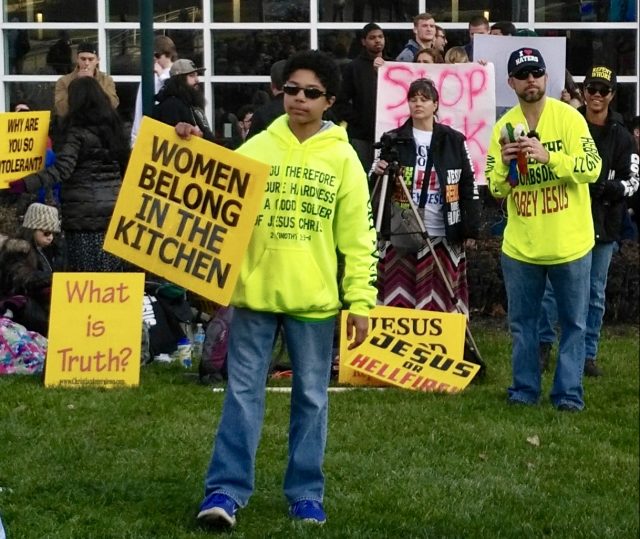 Photo courtesy of Brianna McGovern
Photo courtesy of Brianna McGovern
The Matthew 24 Ministries protested on campus against many types of people, including but not limited to gay men and women, women in general, Muslims, and prostitutes. Their general message was that anyone who disagrees with them will burn in hell.
Although the group spread messages of hate, Kutztown students rebelled against the protest, making McGovern proud of her fellow students.
“[I felt] pure awe at the sign of unity and love that the students were showing against the ministry,” McGovern said.
The students were rallied around the protest group holding signs signs in support of the groups Matthew 24 Ministries was protesting against.
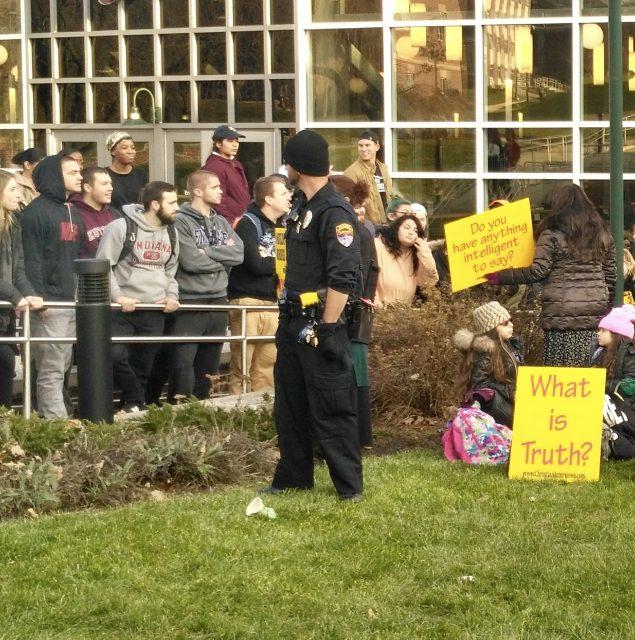 Photo courtesy of Brianna McGovern
Photo courtesy of Brianna McGovern
At the high school level, Dr. Michael Schilder, East Penn School District’s superintendent, believes that it is important to discipline students who use racial slurs or promote intolerance, but he also understands that students maintain certain rights of expression.
For example, students have the right to wear clothing that bears that Confederate flag, as long as it does not inhibit other students from learning. Seeing students brandishing the Confederate flag can be shocking to some, including those who haven’t been exposed to it before.
While living in Connecticut, Nathan Carson rarely encountered people in the community or his school promoting the Confederate flag. However, within his first three weeks as an eighth grader at Lower Macungie Middle School, Carson – who asked that his name be changed – saw a student wearing a T-shirt with a Confederate flag.
“I was more confused than anything else,” said Carson, now a junior at Emmaus, “especially because I knew that Pennsylvania didn’t fight for the Confederate States of America.”
Carson was also shocked at the racial climate he saw in Pennsylvania compared to his life in Connecticut.
While overt incidents of racism do not occur on a regular basis, they happen often enough to have a serious impact on the district’s environment. During his four years as superintendent, Schilder has dealt with several incidents of racism and intolerance, some of which have been more prominent than others.
“[Last year] there were students at the high school, and they would chant the N-word and run away,” Schilder said. “We caught them, and we really came down on them. They were suspended for 10 days. That seemed to pretty much stop that.”
In the 1969 landmark case Tinker v. Des Moines, which favored students who sought to wear black armbands to protest the Vietnam War, the Supreme Court ruled that students may wear what they like as long as it is not offensive in nature and does not cause disruption. Therefore, students may wear the clothes that contain the Confederate flag, provided that there are no inappropriate words accompanying it.
“A student who wears a Confederate flag sweatshirt or T-shirt is allowed,” Schilder said. “Courts have ruled on that many times. It’s a freedom of expression, and it’s a freedom of dressing. You can wear something, as long as it doesn’t create a substantial disruption to the education of everybody else.”
While brandishing the shirt alone would not pose a problem, a student taunting others while referencing the flag on his shirt would be cause for discipline.
“In that case we have a reason to say ‘Hey you are not wearing that again,’” he said. “We have a reason to ban that sweatshirt. But if we don’t have a reason, if it’s not causing a disruption, we can’t do it.”
While freedom of expression is a vital part of student rights, that does not mean students may choose to do whatever they please while in school.
This year, one Emmaus student brought a Confederate flag to school, draped it around his shoulders, and then spread it across a lunch table. Some students were offended by the action, which would be considered disruptive. They posted images on social media, expressing their disbelief of the scene. The student was told to not bring in the flag again, or he would face disciplinary action.
“You can argue that the sweatshirt is also intentionally worn for disruption, but you can’t argue the fact that you must wear a shirt,” Schilder said. “Everybody has to wear a shirt. So it’s different than a flag. There’s no reason to bring in a flag.”
“When you walk down the hall with a big flag draped around you, it could be an American flag, there’s still no reason to do that,” he said. “So I would feel the same way about any flag really. I’d ask the student, why are you doing that? It’s creating a disruption in the hallway, but the Confederate flag is a little bit different, because it has so much negativity attached to it.”
Disruption came just 10 miles away for residents of East Greenville, Red Hill, and Pennsburg last October, when someone mailed letters promoting a right-wing pro-white website and discrimination. The letters contained anti-semitic messages and hate speech against African-Americans and promoted the idea of extreme nationalism.
One of the letters depicted Adolf Hitler holding a flag with a Nazi symbol on it next to the words “Proud to be white,” complete with a quote from the World War II dictator on the back.
Some residents in the Upper Perkiomen School District felt shocked and disturbed about receiving the letters.
“When I opened it up I just couldn’t believe it. I thought it was a joke at first,” East Greenville resident Samantha Jones said. “People were really shocked.”
Angelica Gerber, one of Jones’ neighbors, claimed that she felt threatened after reading her letter, noticing how it was personalized to her and her household. Gerber’s letter was addressed to “the gardener” as she maintains a garden outside her house.
“You knew it was someone who was paying special attention to you individually,” Gerber said. “It was like they knew us.”
Not only did Gerber receive a personalized letter, but her neighbors did as well. One who keeps an American flag outside their home was referred to as “Patriotic Women.” Other letters addressed their receivers with names such as “Head of Household.” She finds the personal touch in the letters to be an invasion of her and her neighbors’ privacy.
Despite their discomfort, local police and post offices could not help.
“In Pennsylvania, you have to have hateful speech or conduct in conjunction with another criminal element, like a specific threat to bodily injury or property crime,” East Greenville interim Police Chief Andrew Skelton said in an interview with Channel 69 News.
While police remained no help to the incident, East Penn Hill News stepped up and held a vigil with the name of, “One Valley United” in Pennsburg Square. The neighbors believed the vigil strengthened the community because the people behind the creation of the letters did not receive any recognition, nor were they able to draw out any negative reactions they may have hoped for.
“They didn’t get the hatred and the fighting and publicity they wanted. It brought people together,” Jones said. “I like to see when hatred has a reverse effect on people. I think that’s a good thing.”
After experiencing an incident such as this, Jones believes that the real takeaway is to spread kindness to combat the hate.
Recently Emmaus High School, along with its No Place for Hate club, sponsored a visit from former white supremacist Frank Meeink who spoke to the school about empathy and tolerance for others. Partly the inspiration for the film American History X, Meeink now tours the country to tell how hatred once motivated his actions, but how he has since turned his life around.
 Photo by Arianna Werner
Photo by Arianna Werner
When hate-driven actions occur at school, Emmaus administrators say they must do more than speak with the student(s) in question. Instead, there must be harsher discipline, such as with the students who used the N-word in the hallways.
According to Emmaus Principal Dr. Kate Kieres, there is a specific process in dealing with hate speech and other incidents of intolerance.
“We would first depend on someone to report [inappropriate conduct],” Kieres said. “Either a student, maybe a teacher who observed it, anywhere we would get a report from. A student from class may come down to the office and say, ‘I heard a student call this student a bleep.’ And from there we would begin the process of investigating it first as a disciplinary incident, but depending on who reported it and the circumstances under which they reported it, we might want also to investigate it under our district harassment policy.”
In addition to efforts from the school, certain occurrences are extreme enough that they must be reported to the state. There have been several incidents over the past couple of years that have required such action, due to a state code, which deals with racial and ethnic intimidation.
However, every individual case is different, causing punishments to vary. Schilder prefers a less strict discipline code, and would rather look at each situation individually.
“People want strict rules, but you have to be flexible with that, you have to work with students,” Schilder said. “ I always preferred a looser discipline code so that I had flexibility to work with individual students, and make exceptions, work with the situation.”
Being able to identify the difference between the kids who are just making a poor decision and the ones who are deliberately trying to hurt or put other students down is a big part of how Schilder handles discipline.
While there are undoubtedly some students with racist views at EHS, Schilder believes that the overwhelming amount of positive and accepting students keep the racists from gaining any sort of favor.
“I don’t think this is a racist high school at all. I think most kids are very progressive, very open-minded. I think that’s the predominant view,” he said. “Black, white, hispanic, none of them want a racist high school.”
While there are incidents such as hateful symbols drawn in bus window condensation, or the N-word being yelled in the hallway by a group of kids, overall students do not tolerate racism and when something occurs it is dealt with. Students who witness these things play their part by speaking up.
“There’s many more students who reject the use of the N-word, and object to racism than the other way. Those students have to speak up,” Schilder said.
Racism may continue to occasionally rear its ugly head in our classrooms or in our halls, but part of the responsibility to stop it falls on students who see it. A fellow peer’s distaste for a racist or insensitive act goes much farther than an adult who scolds you in their office.
“It takes a lot of guts to look even a best friend in the eye and say, ‘Hey, you know I really don’t appreciate that,’” Schilder said.


